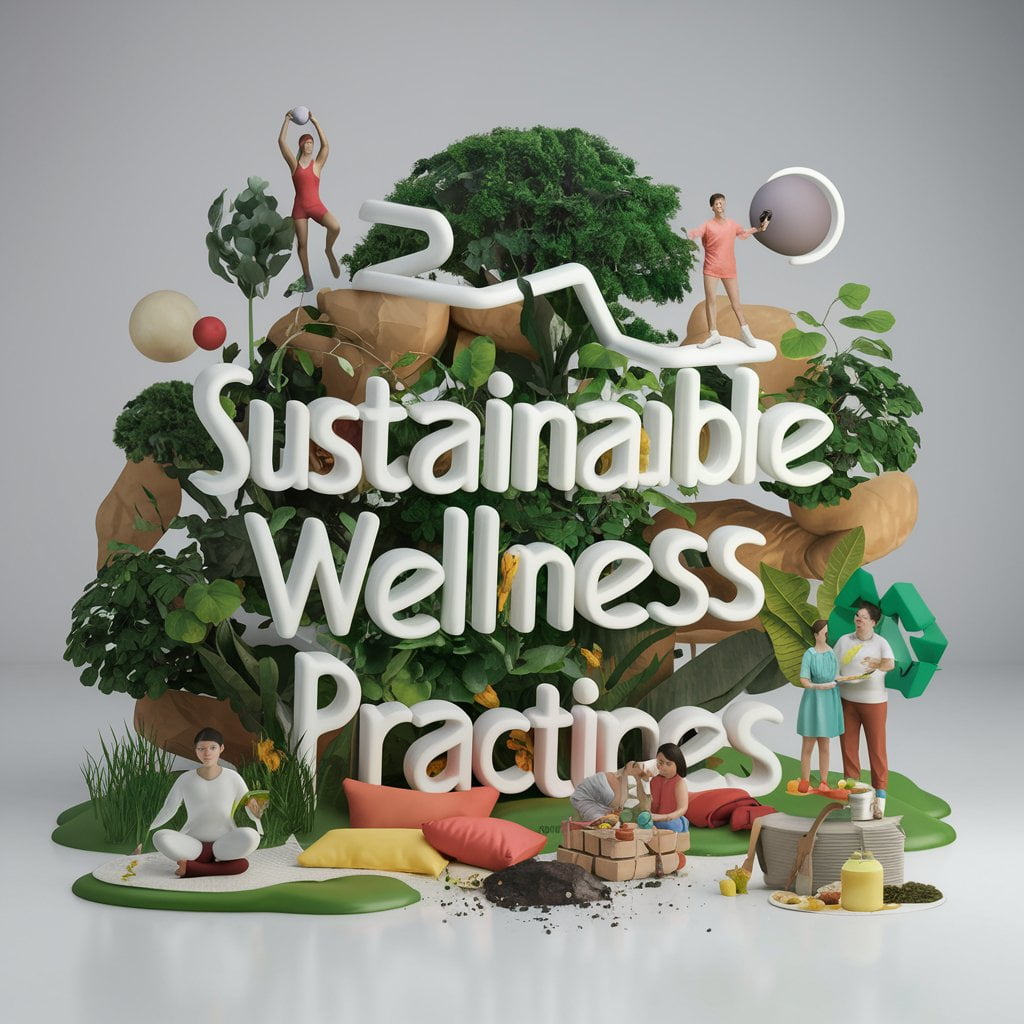How to Incorporate Sustainable Wellness Practices
Introduction to Sustainable Wellness
Sustainable wellness is a holistic approach to health that considers not only personal well-being but also the well-being of our planet. It’s about making choices that are good for our bodies, minds, and the environment. For medical hippies, this concept aligns perfectly with our philosophy of living in harmony with nature and embracing natural healing practices.
By incorporating sustainable wellness practices into our lives, we can nurture our health while also contributing to the health of our planet. This symbiotic relationship is at the core of the medical hippie lifestyle, where we recognize that our personal health is intrinsically linked to the health of our environment.
Practice #1: Mindful Consumption
Mindful consumption is about being aware of what we buy, use, and discard. It’s a practice that encourages us to think critically about our needs versus our wants, and to consider the environmental impact of our choices.
- Choose products with minimal packaging or recyclable packaging
- Opt for reusable items over single-use products
- Support local, sustainable businesses
- Practice the “30-day rule” before making non-essential purchases
- Repair items when possible instead of replacing them
Eco Tip:
Start a “zero waste kit” with reusable items like a water bottle, coffee mug, shopping bags, and utensils. Keep it with you to avoid single-use plastics when you’re out and about.
Practice #2: Plant-Based Diet
A plant-based diet is not only beneficial for our health but also for the planet. It can help reduce greenhouse gas emissions, conserve water, and protect biodiversity. As medical hippies, we recognize the healing power of plants and their ability to nourish our bodies naturally.
- Start with “Meatless Mondays” and gradually increase plant-based meals
- Experiment with different plant-based proteins like beans, lentils, and tofu
- Incorporate a wide variety of colorful fruits and vegetables
- Try plant-based alternatives to dairy products
- Grow your own herbs or vegetables if possible
Simple Plant-Based Recipe: Buddha Bowl
Ingredients: Quinoa, roasted sweet potatoes, chickpeas, avocado, kale, and tahini dressing.
Instructions: Cook quinoa. Roast sweet potatoes and chickpeas. Arrange all ingredients in a bowl. Drizzle with tahini dressing. Enjoy your nourishing, planet-friendly meal!
Practice #3: Eco-Friendly Exercise
Sustainable exercise practices allow us to stay fit while minimizing our environmental impact. They often involve connecting with nature, which can have additional mental health benefits.
- Practice outdoor yoga or tai chi in natural settings
- Take up cycling for commuting or leisure
- Go for hikes or nature walks
- Try plogging (jogging while picking up litter)
- Participate in community garden work for physical activity
Nature Connection Tip:
Try “earthing” or “grounding” by walking barefoot on grass or sand. This practice is believed to help reduce inflammation and improve sleep by connecting you directly with the Earth’s electrons.
Practice #4: Sustainable Mental Health Practices
Mental health is a crucial component of overall wellness. Sustainable mental health practices often involve connecting with ourselves, others, and nature in ways that don’t deplete resources.
- Practice mindfulness meditation
- Keep a gratitude journal
- Engage in forest bathing (spending mindful time in nature)
- Join or start a community garden
- Participate in eco-therapy or nature therapy sessions
Mindfulness Exercise:
Try a “sensory nature walk”. As you walk, focus on each of your senses one at a time. What do you see, hear, smell, feel, and taste? This practice helps ground you in the present moment and deepens your connection with nature.
Practice #5: DIY Natural Products
Creating your own natural products reduces packaging waste, avoids harmful chemicals, and allows you to customize ingredients to your needs. It’s a fun way to take control of what you put on your body and in your home.
- Make your own natural cleaning products
- Create DIY skincare products like face masks and body scrubs
- Craft your own herbal teas and tinctures
- Make beeswax wraps as an alternative to plastic wrap
- Create natural air fresheners with essential oils
DIY All-Purpose Cleaner Recipe
Ingredients: 1 part white vinegar, 1 part water, lemon rind, rosemary sprigs.
Instructions: Combine all ingredients in a spray bottle. Infuse for a week before using. Shake well before each use. This natural cleaner is effective and smells great!
Practice #6: Reduce Energy Consumption
Reducing energy consumption not only lowers your carbon footprint but can also create a more peaceful living environment. It’s about being mindful of our energy use and finding creative ways to conserve.
- Use natural light and LED bulbs when possible
- Unplug electronics when not in use
- Hang clothes to dry instead of using a dryer
- Use a programmable thermostat to optimize heating and cooling
- Consider switching to renewable energy sources like solar power
Energy Saving Tip:
Create a cozy “hygge” atmosphere with candles and warm blankets instead of turning up the heat. This Danish concept promotes well-being and contentment while saving energy.
Practice #7: Community Involvement
Sustainable wellness extends beyond individual practices to community involvement. Engaging with our communities can enhance our sense of belonging, purpose, and overall well-being while contributing to broader sustainability efforts.
- Volunteer for local environmental organizations
- Participate in community clean-up events
- Join or start a local food co-op
- Attend town meetings to advocate for sustainable policies
- Organize skill-sharing workshops on sustainable practices
Community Building Idea:
Start a “Free Cycle” group in your neighborhood where people can give away items they no longer need. This reduces waste, helps others, and builds community connections.
Embracing Sustainable Wellness in Your Medical Hippie Lifestyle
Incorporating sustainable wellness practices into your medical hippie lifestyle is a journey of mindful choices and continuous learning. By embracing mindful consumption, plant-based eating, eco-friendly exercise, sustainable mental health practices, DIY natural products, energy conservation, and community involvement, we can create a lifestyle that nurtures both personal and planetary health.
Remember, sustainable wellness is not about perfection, but about making conscious choices that align with our values and contribute to the greater good. Start with small changes, be kind to yourself in the process, and celebrate each step towards a more sustainable, balanced life.
As medical hippies, we have the opportunity to be at the forefront of this holistic approach to wellness. By living our values and sharing our practices with others, we can contribute to a larger movement of conscious, sustainable living. Let’s continue to explore, grow, and heal, always keeping in mind the interconnectedness of our personal health and the health of our beautiful planet.
Frequently Asked Questions
Q: What is the difference between sustainable wellness and regular wellness practices?
A: Sustainable wellness goes beyond personal health to consider the impact of our wellness practices on the environment and society. It aims to promote health and well-being in a way that can be maintained long-term without depleting natural resources or causing harm to the planet.
Q: How can I start incorporating sustainable wellness practices into my daily routine?
A: Start small by choosing one area to focus on, such as reducing single-use plastics or eating more plant-based meals. Gradually introduce new practices as you become comfortable with the changes. Remember, it’s about progress, not perfection.
Q: Are sustainable wellness practices more expensive?
A: While some sustainable products may have a higher upfront cost, many sustainable practices can actually save money in the long run. For example, using a reusable water bottle, making your own cleaning products, or growing your own herbs can all be cost-effective over time.
Q: How does sustainable wellness relate to the medical hippie lifestyle?
A: The medical hippie lifestyle emphasizes natural healing, harmony with nature, and holistic well-being, which aligns perfectly with sustainable wellness practices. Both philosophies prioritize the interconnectedness of personal health and environmental health.
Q: Can sustainable wellness practices really make a difference for the environment?
A: Yes! While individual actions may seem small, collective efforts can have a significant impact. Every sustainable choice contributes to reducing waste, conserving resources, and promoting a healthier planet. Moreover, by living sustainably, we inspire others to do the same, creating a ripple effect of positive change.
Discover more from Medical Hippie
Subscribe to get the latest posts sent to your email.

